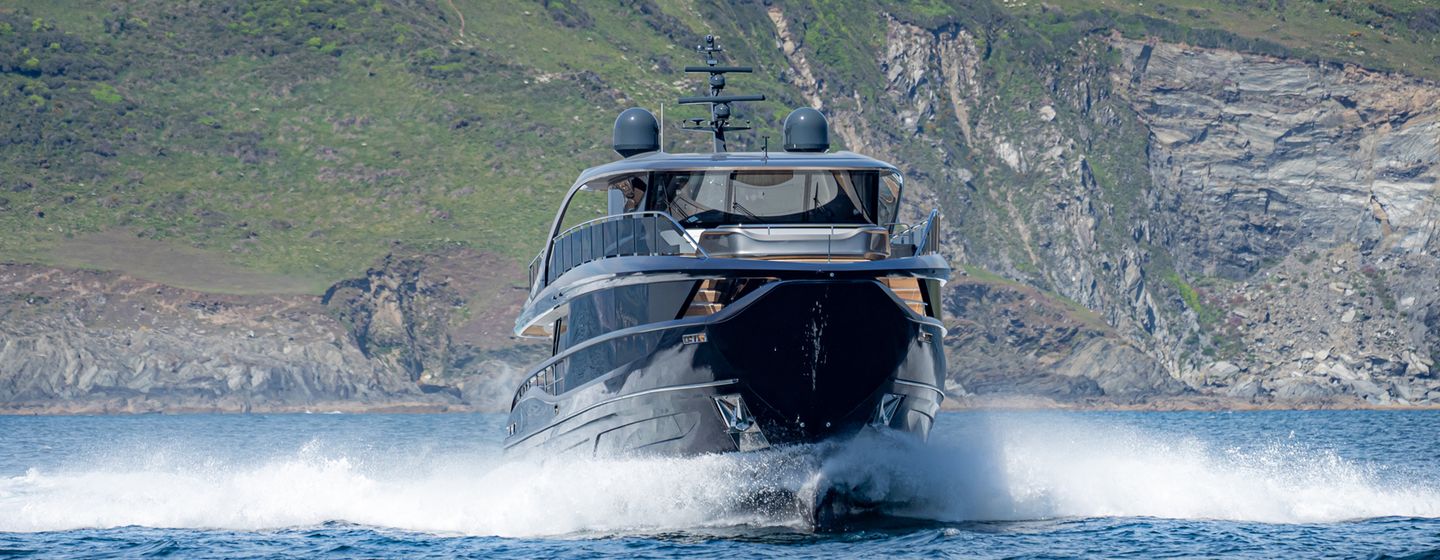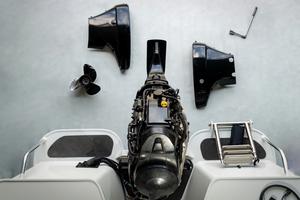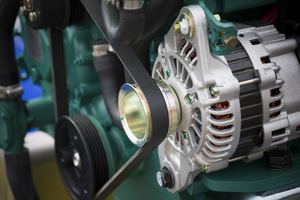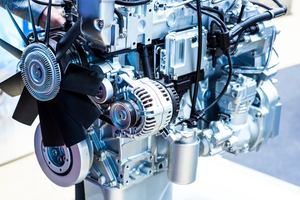If you’re thinking about buying a new yacht, it's well worth knowing what horsepower vs brake horsepower means, ensuring you get a vessel that matches your power requirements.
Yacht manufacturers are often inconsistent when it comes to measuring power, sometimes using horsepower (hp), brake horsepower (bhp), metric horsepower (PS), or even shaft horsepower (sp). But what exactly is the difference between the horsepower types? And why should you care?
If you’re thinking about buying a new yacht, it's well worth knowing what each power measurement means, ensuring you get a vessel that matches your power requirements.
The units of measurement all relate to how much power a yacht’s engine produces. Normally, the bigger the number, the more impressive a yacht’s performance and acceleration will be, but this is all dependent on the size of the yacht and its hull design. A 1,000 GRT superyacht, for example, is going to require much more power to run at the same speed as a smaller, lighter vessel.
- What is Horsepower (hp)?
- What Is Shaft Horsepower in the Yacht World?
- What is a Brake Horsepower (bhp)?
- What is the Relationship between Brake Horsepower and Metric Horsepower?
- How Does Metric Horsepower (PS) Matter for Yacht Experience?
- The Kilowatt (kW) and the Battle of Horsepowers
- How to Measure Horsepower
- How to Calculate Horsepower? For Yachts, That’s Not Easy
- Why Estimating Yacht Horsepower Matters
What is Horsepower (hp)?
Horsepower (hp) is a unit of measurement that describes the power output of an engine or motor. It was originally created by engineer James Watt in the late 18th century to compare the output of steam engines to the power of draft horses. Wanting to see how many horses just one engine could replace, Watt found out that a single horse could lift 330lbs (150kg) of water approximately 30.5m (100ft) a minute. So, Watt deemed one horsepower to be equal to 33,000 foot-pounds per minute.
Put simply, horsepower is the power needed to lift 550 pounds by one foot in one second. One horsepower equals about 746 watts in the electrical system, or about 33,000 foot-pounds of work per minute in mechanical terms.
While many countries have officially switched to watts or kilowatts for power measurements, horsepower remains a common way to measure and compare the power of boat engines. However, it’s important to understand that horsepower can be used in different contexts - each slightly differs in numbers.
- Mechanical/Imperial horsepower: 745.7 watts
- Metric horsepower: 735.5 watts
- Electrical horsepower: 746 watts
- Boiler horsepower: approximately 9,810 watts

This is imperial horsepower. For metric horsepower, the figure is rounded down slightly, to a nice, even 4,500kg per minute — that’s about 32,550 foot-pounds per minute.
Horsepower is used for marine engines primarily due to historical precedent and industry standardization. Back in the XIX century, engineers used horsepower to compare early boat engines to the number of horses needed to pull boats upstream through canals.
The marine industry continues to favor horsepower because it enables easy comparison between different engine manufacturers, and it’s also widely understood by consumers and industry professionals. The industry uses two key measurements to measure torque needed to push through water resistance:
- Shaft horsepower: power delivered to the propeller.
- Brake horsepower: total engine power before transmission losses.
Let’s examine what these terms mean and why they are important.
What Is Shaft Horsepower in the Yacht World?
Like a game of telephone, power gets lost as it travels from the engine through various mechanical components. SHP measures what's left at the end of this journey. In simple words, shaft horsepower (SHP) tells the real story of power that actually reaches your yacht's propellers after all the losses through the transmission system. Think of it as the "truth teller" of marine power.
Shaft horsepower (SHP) is specific to boats and may be the most important horsepower rating for yachts. It is measured at the propeller shaft coupling flange and accounts for additional losses to power that can occur due to engine accessories and the reduction gear.
These losses usually cost about 3% of a yacht’s BHP statistic. So, a 1,500bhp engine would likely make 1,455shp.
For yacht builders, shaft horsepower is crucial because it shows the actual power available for pushing through water. While brake horsepower might boast bigger numbers (we’ll discuss it next), SHP reveals the genuine performance you'll get on the water.
A practical example: A yacht engine rated at 1000 BHP might only deliver 900 SHP to the propellers. This 10% loss through the transmission system is vital information for engineers planning hull design and selecting propellers.
SHP helps prevent the "paper tiger" syndrome - where a yacht looks powerful on paper but underperforms in real conditions.
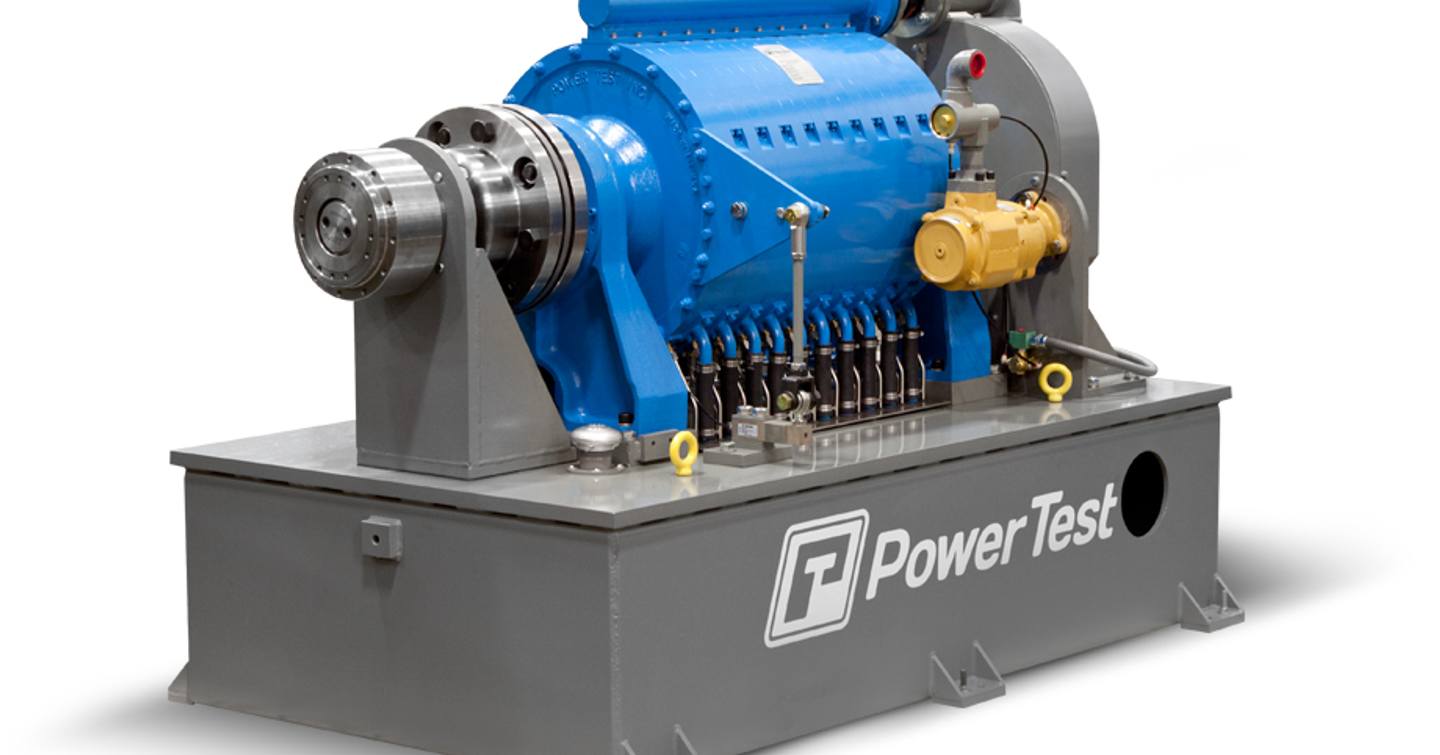
What is a Brake Horsepower (bhp)?
Brake horsepower (BHP) is the power output measured directly at a yacht's engine before any power losses through the transmission system or propeller shaft. It influences docking maneuverability and handling in rough conditions.
Ultimately, brake horsepower helps determine if the engine can adequately power the yacht's weight and size. BHP metric affects fuel consumption and efficiency as it’s used to calculate maximum potential speed. Also, insurance companies use brake horsepower for coverage calculations.
BHP gives a realistic figure on usable power, as any kinetic application such as a car, yacht, or plane, will suffer from a degree of drag from the road, sea, or air, reducing the actual power. Think of BHP as the engine's raw power, while actual usable power will be somewhat less due to mechanical losses in the drivetrain.
What is the Relationship between Brake Horsepower and Metric Horsepower?
Brake horsepower (BHP) and metric horsepower (PS) are closely related but slightly different measurements. Metric horsepower is about 1.4% less than brake horsepower. The difference comes from their definitions:
- BHP is based on the Imperial unit system (foot-pounds)
- PS is based on the metric system (kilogram-meters)
This means that 1 BHP equals to 1.014 PS
At the first glance, brake horsepower is similar to metric horsepower, but instead takes into account power that can be lost because of friction. As a result, a metric horsepower figure is often larger and a more rounded number than bhp, making it a convenient tool for marketers.
But where did the letters PS come from? Shipyards that quote metric horsepower sometimes use the “PS” abbreviation to make it distinct from “BHP” (brake horsepower). The “PS” abbreviation stands for “Pferdestarke”, a German word literally meaning the strength of a horse.
How Does Metric Horsepower (PS) Matter for Yacht Experience?
Think of metric horsepower (ps) as the European way of measuring engine power - it's like ordering your wine in milliliters instead of fluid ounces. When you're looking at luxury yachts, especially those built in European yards like Benetti, Feadship, or Lurssen, you'll often see power listed in PS.
European yacht shopping becomes easier because you can directly compare engines. When a Riva shows 2000 PS, that's about 1972 BHP - a difference that could affect your cruising speed and fuel consumption.
Documentation and certification for Mediterranean cruising often requires PS numbers. Having this understanding helps when dealing with European marinas, mechanics, or surveyors.
This also means that a 5000 PS engine delivers slightly less power than a 5000 BHP engine - about 70 horsepower difference. While this might not affect your cocktail hour on the sundeck, it could influence your yacht's performance during long Mediterranean crossings or when pushing against strong currents.
Most experienced owners and captains focus more on shaft horsepower for actual performance, but understanding PS helps you navigate the European yacht market and maintenance scene with confidence.
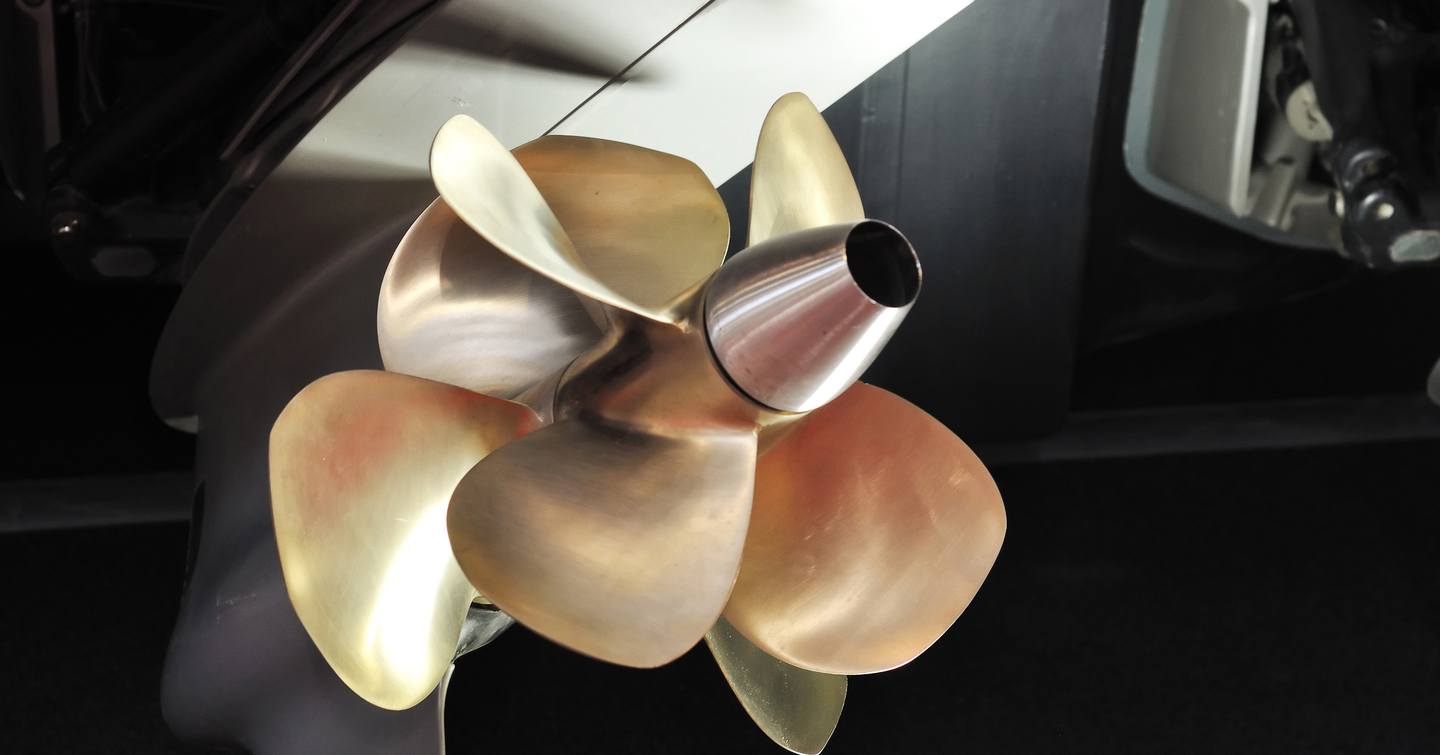
The Kilowatt (kW) and the Battle of Horsepowers
Manufacturers who produce large superyachts may well quote kilowatt (kW) statistics rather than metric or brake horsepower.
Kilowatts are another unit of measurement with an ode to our old friend James Watt. The term literally equates to 1,000 Watts (W), a unit of power that was named in honor of the inventor after his passing.
Luckily, it’s easy to convert metric horsepower into kilowatts. 1kW is equal to roughly 1.36 metric horsepower. So, for example, the 72m (235ft) superyacht KOGO makes 1,500kW, which equals approximately 2,040 metric horsepower.
As you’ve just seen, the problem with kW compared to metric horsepower is that the number ends up looking considerably smaller and so less impressive, which is why many manufacturers opt for horsepower metrics in specification sheets.
How to Measure Horsepower
When buying a yacht, the specification sheet is a crucial document that provides valuable information about the vessel's capabilities and features. The performance section is particularly important, as it gives you an idea of the yacht's speed, range, and overall performance.
While the specification sheet may provide some information on the engine size and horsepower, it's not always possible to measure yacht horsepower directly. But why would you want to do it in the first place?
Why? Horsepower ratings can be misleading. Yacht manufacturers often provide horsepower ratings based on the engine's maximum power output, which may not necessarily reflect the yacht's actual performance in various sea conditions. Factors like hull design, propeller efficiency, and loading can significantly impact the yacht's speed and acceleration.
Also, horsepower ratings can be influenced by the manufacturer's testing procedures, which may not replicate real-world conditions.
How to Calculate Horsepower? For Yachts, That’s Not Easy
While you can't measure yacht horsepower directly, you can make an educated estimate based on various factors. Here are a few methods how to calculate horsepower (or at least make an informed estimate).
Calculate horsepower from engine specifications
If you know the engine's power output in kilowatts (kW) or brake horsepower (bhp), you can estimate the yacht's horsepower. For example, a 1,000 kW engine is equivalent to approximately 1,341 bhp.
Use a horsepower calculator
Online calculators can estimate horsepower based on factors like the yacht's weight, length, beam, and speed. These calculators use algorithms to estimate the power required to achieve a given speed.
Sea trial data
If you have access to sea trial data, you can analyze the yacht's performance in various conditions to estimate its horsepower. This method provides a more accurate estimate, as it's based on real-world data.
Brake horsepower can be measured by a device called a dynamometer, which gets the engine to accelerate up to full revs, and then lets it naturally slow down to a complete stop.
To turn the answer you get from that into metric horsepower, times it by 1.014. If that sounds like a pain, you can use conversion sites like convert-me.com to switch between imperial and metric measurements.
Perhaps the best way is not to calculate the horsepower of a yacht but to consult with a naval architect or marine engineer. These professionals can analyze the yacht's design, engine, and propeller to estimate its horsepower requirements.
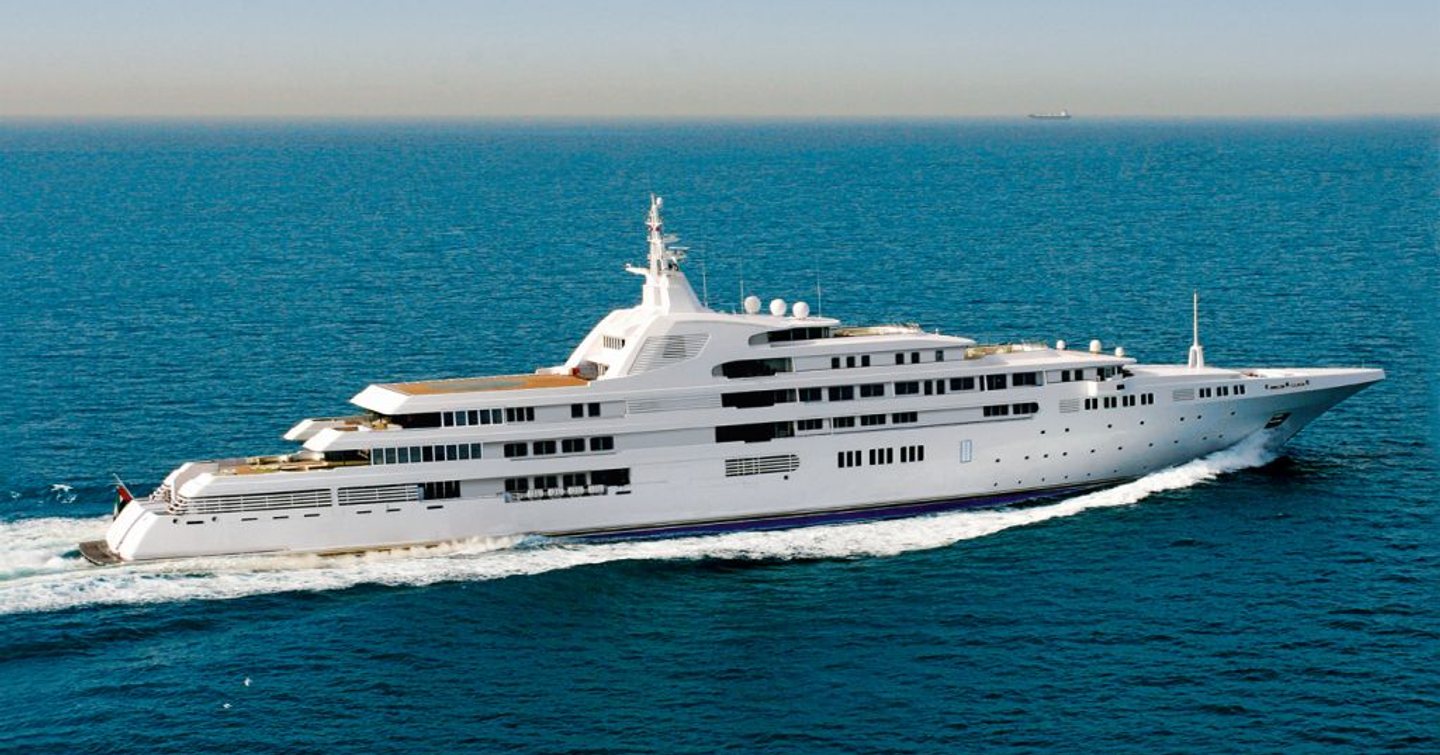
Why Estimating Yacht Horsepower Matters
Accurately estimating a yacht's horsepower when you are buying a yacht is important for several reasons. First of all, knowing the yacht's horsepower helps set realistic performance expectations, ensuring you're not disappointed with its speed or acceleration.
Secondly, estimating horsepower can help you anticipate fuel consumption, which is essential for planning trips and budgeting fuel costs.
Understanding the yacht's horsepower requirements can inform maintenance and repair decisions, ensuring you're addressing potential issues in used yachts before they become major problems.
When it comes to safety, a yacht's horsepower can impact its handling and stability, especially in rough seas or changing climatic conditions. For every 10-degree rise in temperature, you could lose 1-2% of your horsepower output.
In conclusion, while you can't directly measure yacht horsepower, you can estimate it using various methods. By understanding the yacht's horsepower requirements, you can make informed decisions about your purchase and ensure a safe, enjoyable, and efficient yachting experience.
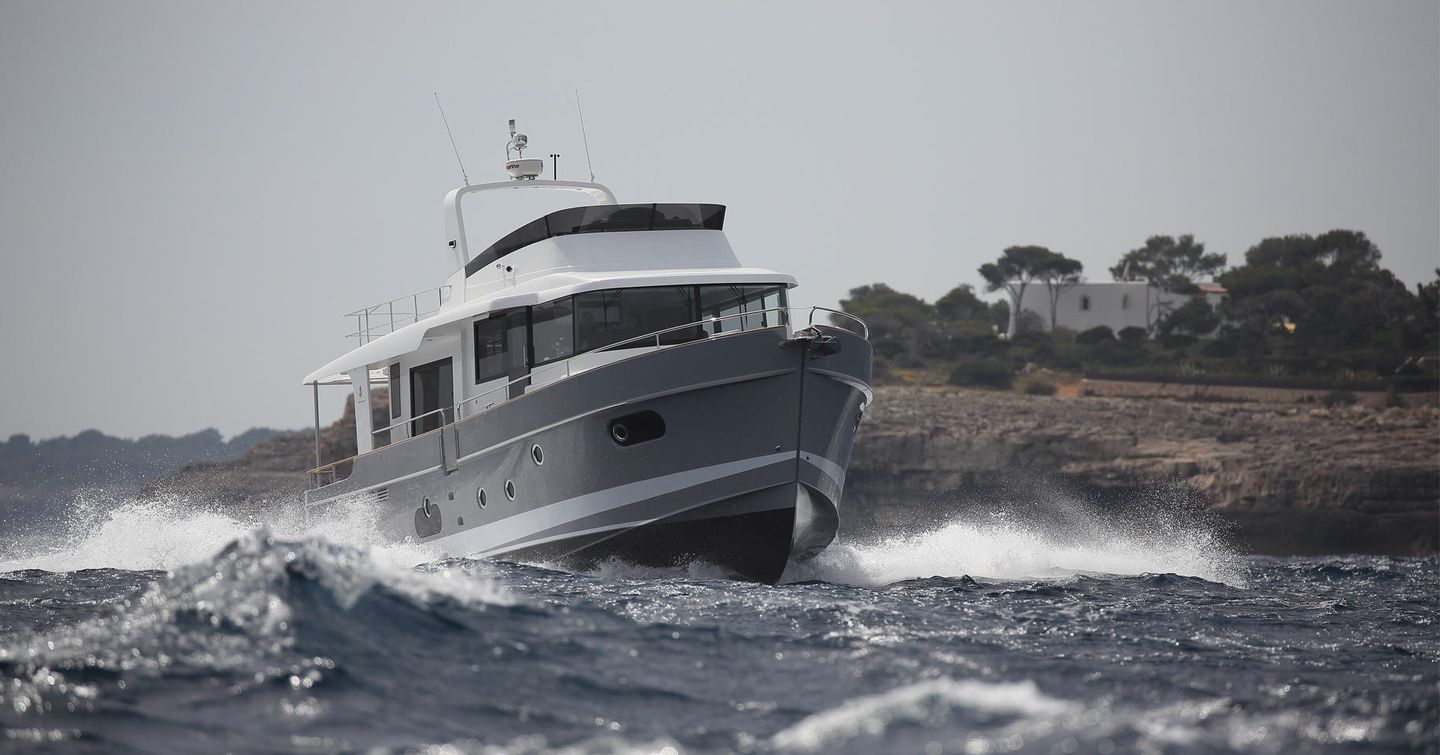
FAQ About Yacht Horsepower
What are horsepower units?
Horsepower (HP) is a unit of measurement for power, originally defined as the rate at which work is done. In the context of engines, it quantifies the engine's ability to perform work over time. The most common units of horsepower are mechanical horsepower (hp), metric horsepower (PS), brake horsepower (bhp), and kilowatts (kW), used in some countries as the standard unit for engine power.
On outboard boats, the capacity plate provides a horsepower rating. What does this rating mean?
The horsepower rating on an outboard boat's capacity plate indicates the maximum horsepower that the boat's manufacturer recommends for the engine. This rating ensures the boat's safe operation and performance. Exceeding this rating can lead to instability, reduced handling, and potential safety hazards.
How much horsepower does a horse have?
As we know, the term "horsepower" was coined by James Watt, who estimated that a horse could produce approximately 33,000 foot-pounds of work per minute, which translates to about 1 horsepower. However, actual horses vary in strength and endurance, so a horse's true power output can differ from this standardized measure.
How much horsepower does it take to pull a yacht?
The amount of horsepower required to pull a yacht depends on several factors, including the yacht's size, weight, hull design, and the conditions in which it will be operated. As a rough estimate, a yacht might require anywhere from 1 to 3 horsepower per 1,000 pounds of displacement for cruising speeds. For example, a 50,000-pound yacht might need between 50 to 150 horsepower to move efficiently.
What is a Pershing yacht 82 horsepower?
The Pershing 82 yacht is equipped with twin MTU 16V 2000 M93 diesel engines, each producing 2,435 horsepower. Therefore, the total horsepower for a Pershing 82 yacht is 4,870 horsepower.
